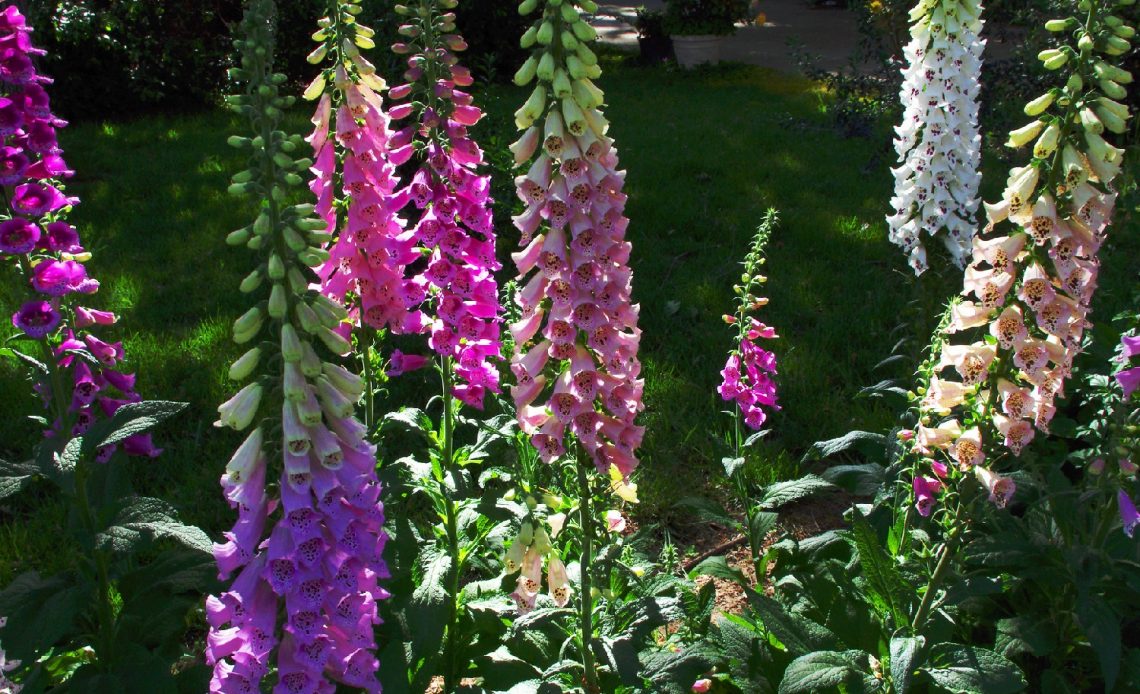

We’re here to help! Wild Yards is a completely free website that is 100% dedicated to helping you create a wildlife-friendly, sustainable yard. Read more
WildYards is reader-supported. When you buy a product through a link on our site, we may earn a comission. Every product is independently selected by our (obsessive) editors and our reviews are unbiased and objective. Read more about our mission or our privacy policy.
Foxgloves, or digitalis, are stunning flowers that have been the focus of artwork for thousands of years. That said, they come with a warning – as foxgloves are famously poisonous. Before you uproot them, there are several other plants that look like foxglove – but, which copycats should you look out for?
Plants such as snapdragons, comfreys, and mulleins are commonly mistaken for foxgloves. Thankfully, at least one of these is perfectly safe – and all are great for welcoming pollinators to your gardens. Let’s take a closer look.
Snapdragons (Antirrhinum)
Snapdragons are delightful perennials that grow in various beautiful colors, such as reds, oranges, and pinks. They have long, thick stalks with little tubular flowers lining the tops, as you will also observe on foxglove plants. Their stems can even grow up to 18 inches tall – great for attracting butterflies fluttering around in the open!
What sets snapdragons apart from foxgloves is that you can see two opposing petals at the top of each flower. These are what form the shape that is reminiscent of a dragon’s mouth, hence the name.
Other differences between snapdragons and foxglove include the foliage (which is small and pointy on snapdragons, and larger and more rounded on foxgloves), and the toxicity level. Snapdragons are safe to keep around pets and children – meaning if you like the visual appeal of a foxglove but prefer a safer flower, these make fabulous alternatives.
Snapdragons are also superb at attracting hummingbirds. Much of the appeal lies in its flower shape and color – they are easy for these pollinators to dip beaks into and drink from. Bees, meanwhile, likely won’t compete for snapdragon nectar as much due to their colors – foxglove, on the other hand, is a highly popular bee attractor. Choose wisely!
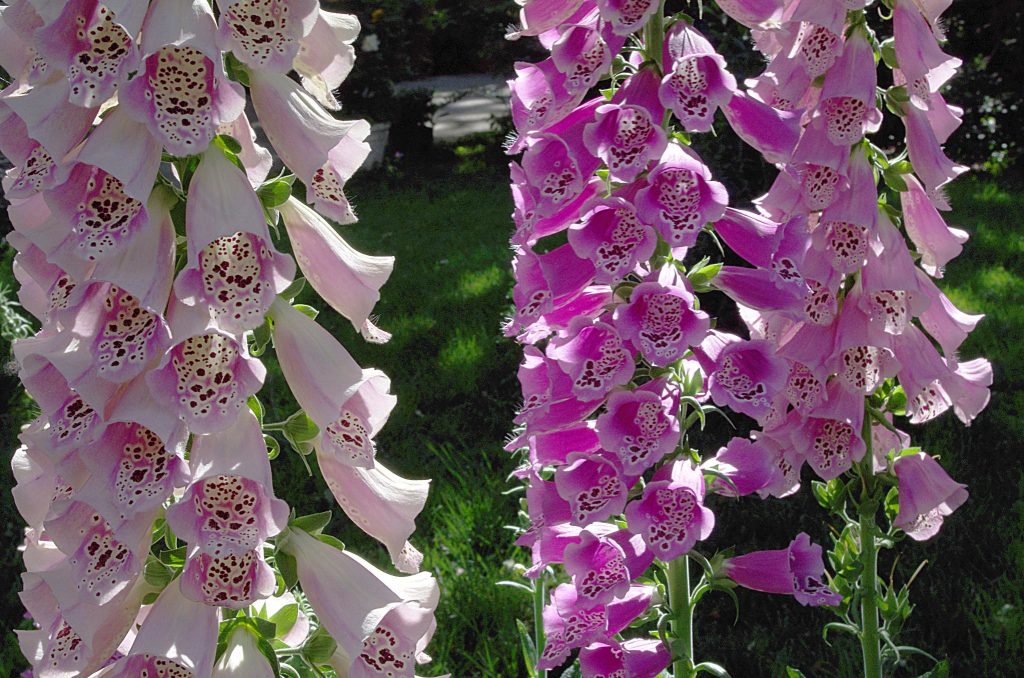
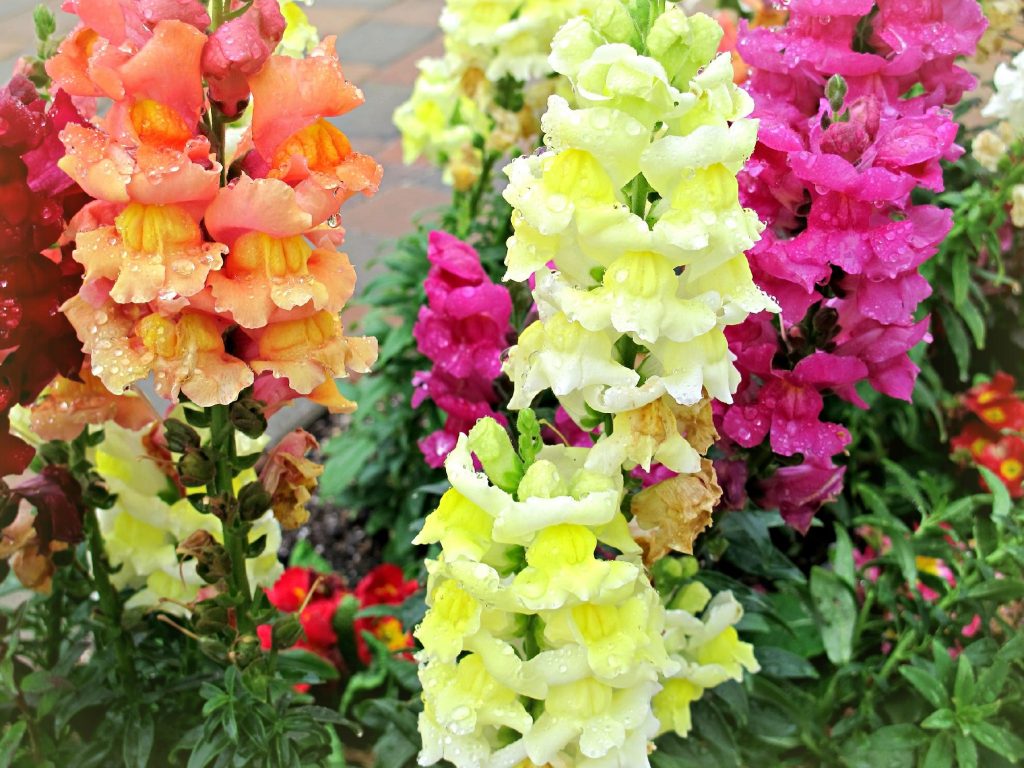
Comfreys (Symphytum)
The comfrey is a shrub that you’ll often find growing in abundance across the US – it’s widely regarded as a weed thanks to its incredible resilience and propagation habits. It’s a perennial, and much like foxgloves, these plants have bold, green, emergent leaves. Comfrey leaves are a little rounder and smoother (and generally appear ‘friendlier’) than the foxglove’s.
Comfreys are easier to tell apart from foxgloves once they start blooming, as their flowers are structured a little differently – and generally boast milder colors. This plant has the potential to grow five feet tall, and you’ll also see it spraying beautiful blues and purples across your garden.
The comfrey, unlike the foxglove, may actually be beneficial to your health! This weed has been used to treat burns and bruises for centuries – it’s a medicinal herb. Conversely, studies prove that comfreys can produce toxic substances that can harm your liver – meaning you should never use them if directed, and they should never be swallowed. Keep your pets and children away.
The comfrey is also fantastic at attracting bees, producing colors well within its favorite palette. You’ll also get lots of competition for nectar from butterflies and hummingbirds with wild comfreys.
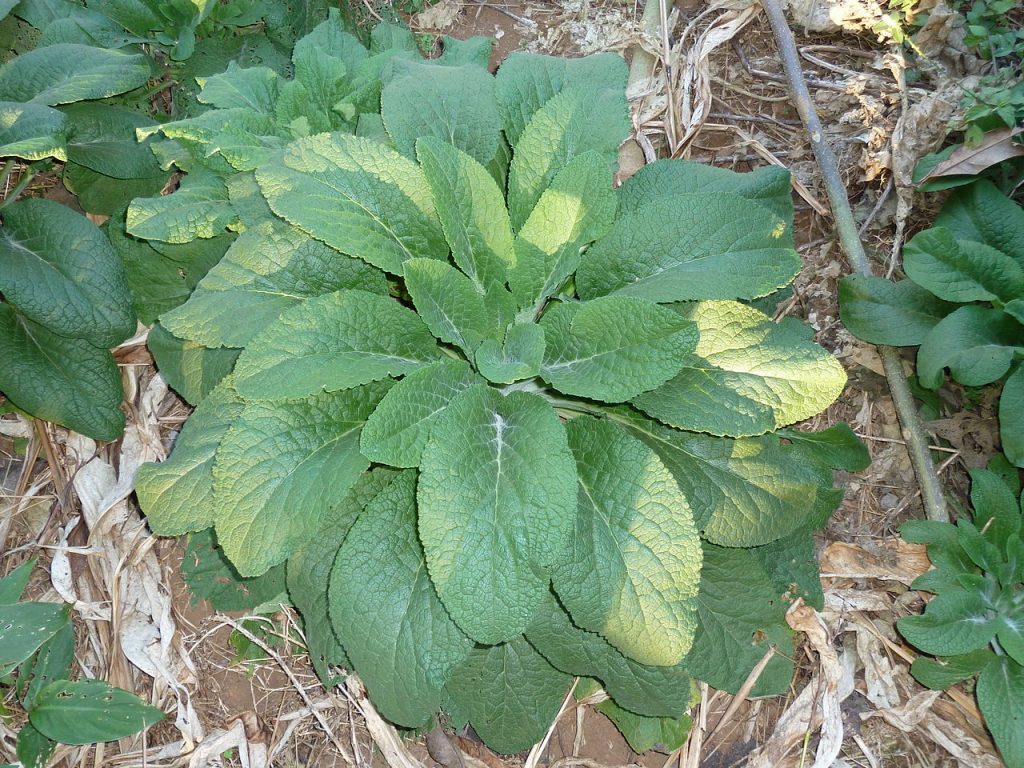
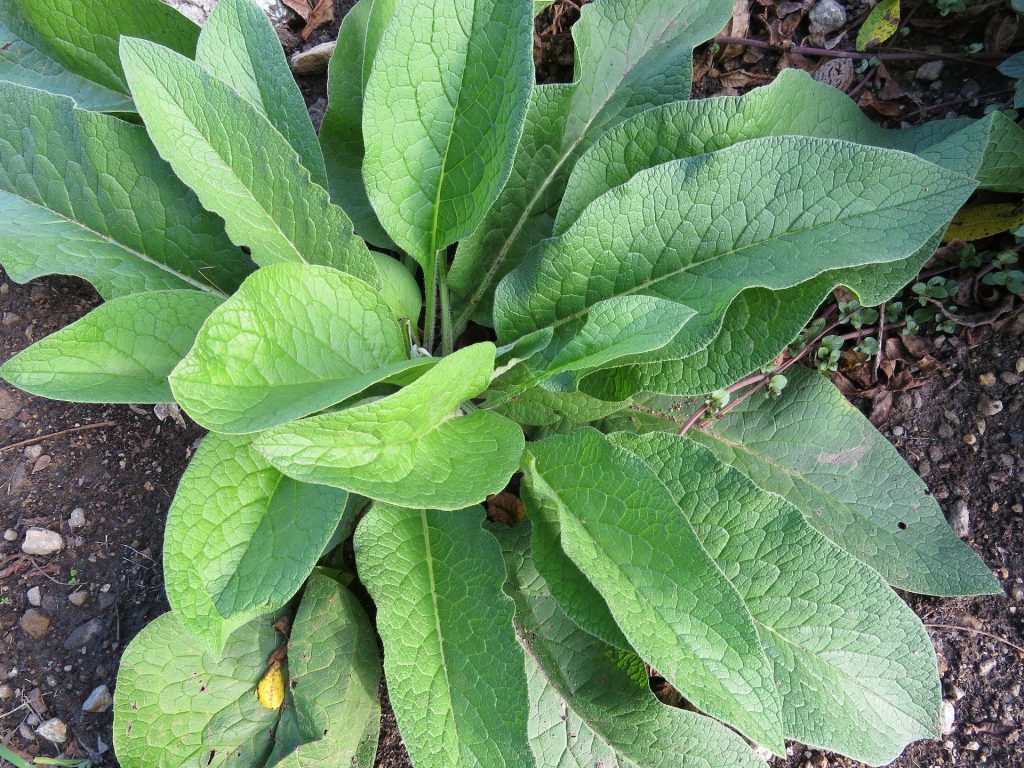
Mulleins (Verbascum thapsus)
The fuzzy, familiar mullein is a popular herb loosely related to the snapdragon and the foxglove. It’s been introduced to North America over the years and can be found growing in particular moist and rainy areas. In the wild, many mistake this plant for the fatal foxglove – their main similarities are their basal rosette leaves and their tall stems, boasting brightly-colored flowers on top.
The main difference lies in shape, as mullein flowers are far more open and usually plume open at the end of very tall stems. Mullein stems can grow up to ten feet tall, too – whereas foxglove stems rarely surpass five feet.
Mullein leaves also tend to carry a slightly paler shade of green than foxglove leaves.
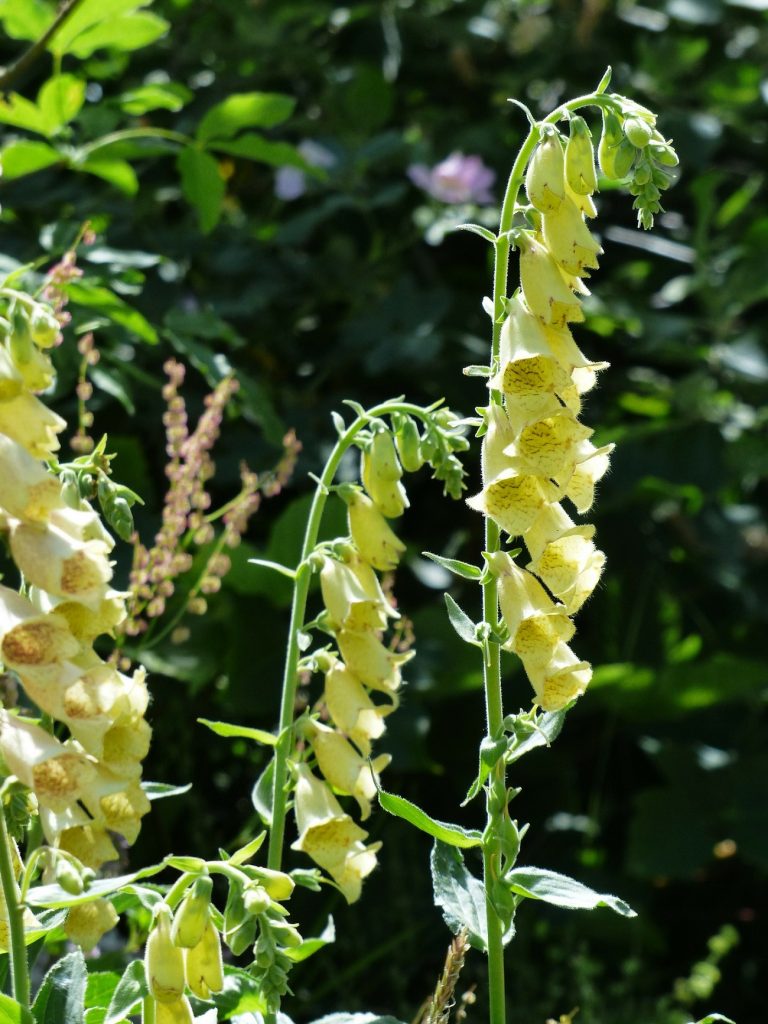
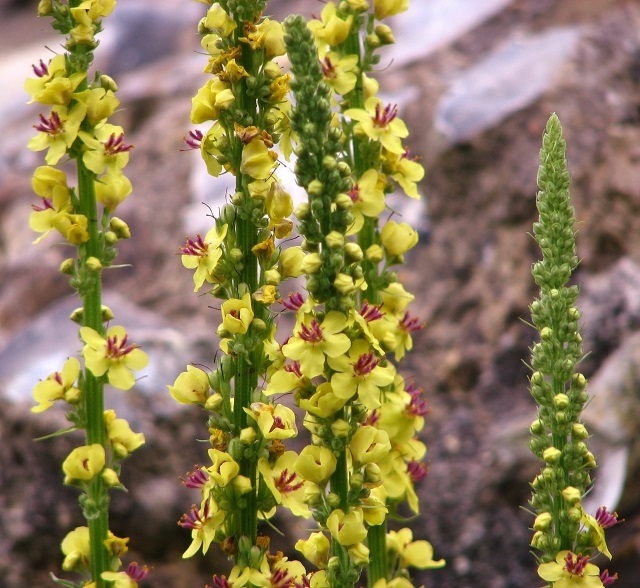
Much like foxglove, take caution – as mullein plants are also known for being poisonous. It is specifically the roots, seeds, and leaves that pose a toxic threat.
You’ll find a variety of different mulleins growing across the US, with specimens such as the Verbascum blattaria, or moth mullein, growing biennially across USDA zones five through nine.
Want to grow foxgloves?
Foxgloves are delightful to watch growing in any garden, but take care if you’d like to produce your own crop. The entirety of the digitalis plant is toxic – meaning if you have pets or children likely to come into contact with your blooms, you’re perhaps better off growing snapdragons instead!
If you’d like to try growing your own foxgloves, they will need nutrient-rich, well-draining soil to thrive. They also need plenty of moisture, so it is important to ensure they get lots of water, especially during the warmer seasons.
Ideally, foxgloves need plenty of sunlight, although they can also do well in partial shade.
If left uncut, foxgloves can quickly reseed themselves and take over a space – so be sure to plant carefully around other specimens. From seeds, foxgloves can take about a year to become fully grown and blossoming plants.
Foxgloves can easily become a staple piece in any garden once they have blossomed. What’s more, they are great for attracting a variety of pollinators such as bees, butterflies, and hummingbirds.
Should I grow plants that look like foxgloves?
It’s a good idea to grow plants that look like foxgloves if you love the appeal of this specimen, but don’t want to risk the toxicity that comes with it. Snapdragons are similar-looking wildflowers that are much less problematic for your garden. You may also consider growing comfreys or mulleins, but again – take care, as these plants are also highly toxic.
Poisoning from a foxglove can result in breathing problems, excessive sweating, hallucinations, vomiting – and may even prove fatal. As delightful as they may look, take care planting digitalis in your own wild yard – and be sure to look carefully at their stems and flowers to tell them apart from other blooms.
